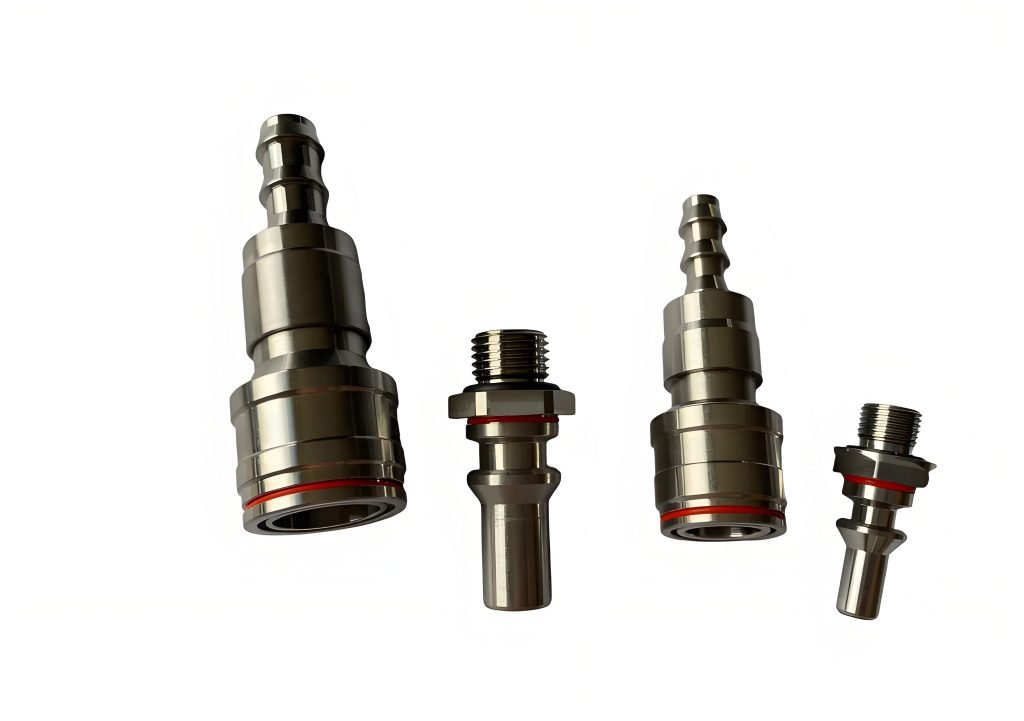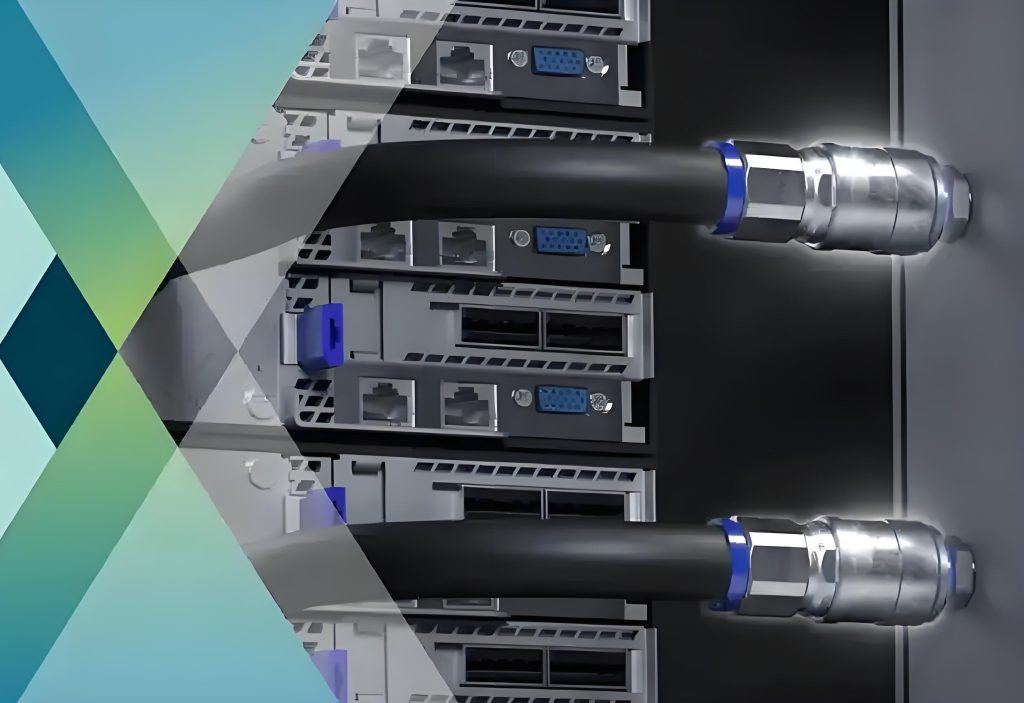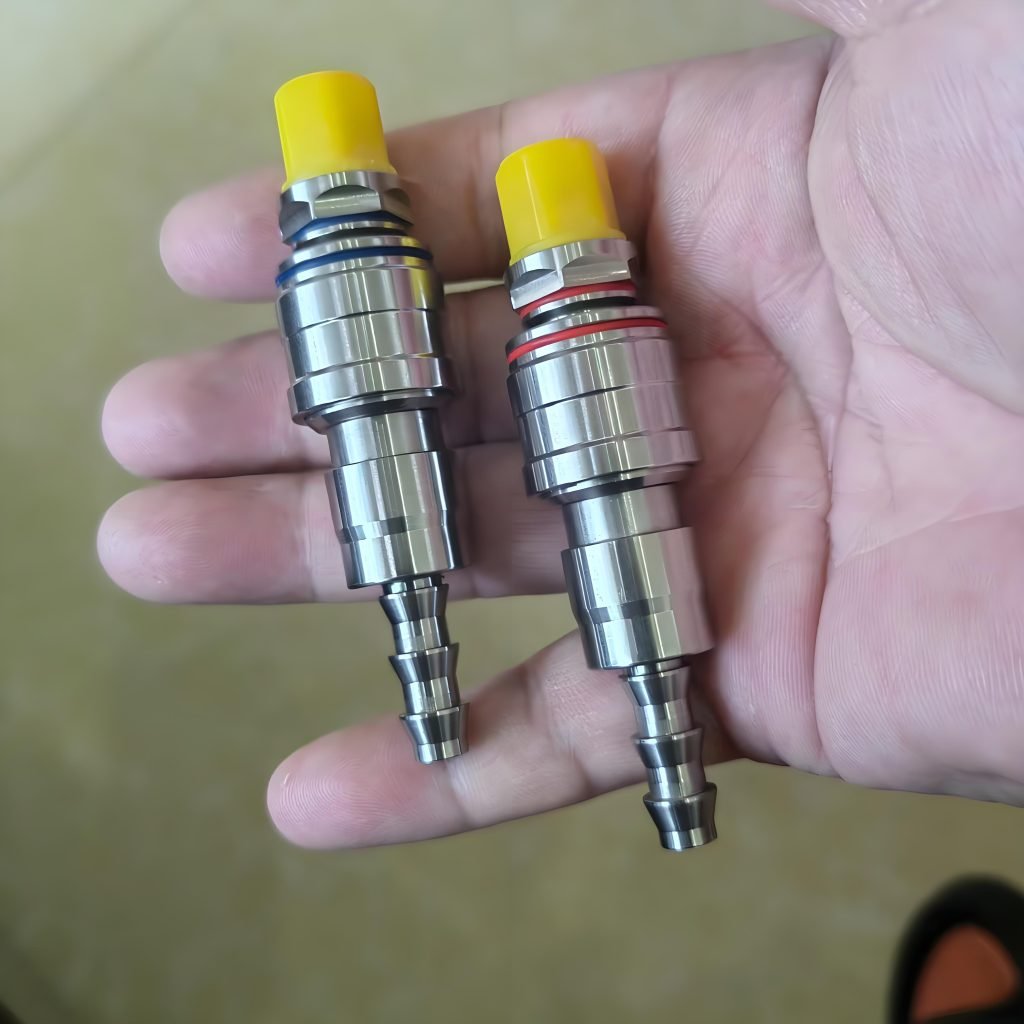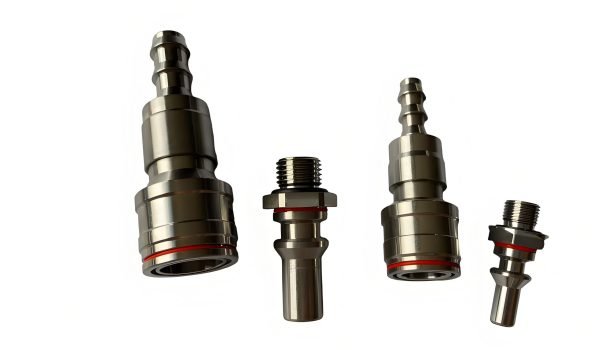Are you having trouble keeping your liquid cooling systems running smoothly? The secret to a reliable system is the right parts, like quick disconnect fittings.
Liquid cooling systems are key in many fields, like AI data center, automotive and medical industries. They help control temperature, which is crucial for precision and keeping equipment in good shape. The right disconnect couplings can make your system work better and cut down on downtime.
Choosing the perfect quick disconnect couplings for your system involves several important factors. This article will help you understand the different types, features, and how to pick the best one for your needs.

Understanding Quick Disconnect Couplings in Cooling Systems
Quick disconnect couplings, also called quick connect couplings, are key to making liquid cooling systems work well. They let you easily connect and disconnect parts. This is important for keeping the system running smoothly and for making changes.
The Role of Quick Disconnect Fittings in Liquid Cooling
In liquid cooling systems, these fittings connect different parts like heat exchangers and pumps. They make it easy to do maintenance or change the system. This is really helpful in places where you can’t afford to stop work for long.
Key Features and Benefits
Quick disconnect fittings are known for their tight seals and ability to handle pressure and temperature. They also resist corrosion. These qualities mean less downtime, a more reliable system, and better safety. Using top-notch fittings helps your cooling system run better.
Why Quality Matters in Cooling Applications
The quality of liquid cooling fittings is very important. High-quality ones are made with CNC turning and other advanced methods. This ensures they perform well and reliably. Using the best fittings helps avoid problems that could slow down your system. So, it’s smart to invest in quality fittings for your cooling system.
How Liquid Cooling Connectors Work
Quick disconnect couplings make connecting and disconnecting in liquid cooling systems easy. They are key for the efficient flow of coolant between system components.
Basic Operating Principles
These couplings work on a simple yet effective principle. They use valve systems and locking mechanisms to control coolant flow. This makes connections and disconnections easy.
The Connection and Disconnection Process
Connecting involves opening the valve system, letting coolant flow. The locking mechanism then secures the connection, making it leak-tight. To disconnect, release the lock and the valve shuts off the flow, preventing spills.
Internal Mechanisms Explained
The inner workings of liquid cooling connectors are built for reliability and efficiency. Two main parts are crucial:
Valve Systems
The valve system manages coolant flow. It opens when connected, letting coolant through. When disconnected, it shuts, reducing coolant loss.
Locking Mechanisms
The locking mechanism ensures a tight seal. It locks when connected, preventing leaks. The design varies, but often requires a simple action to connect or disconnect.
Knowing how these parts work helps choose the right couplings for your system. This ensures your system performs well and reliably.

Types of Quick Connect Couplings for Liquid Cooling
Quick Connect couplings are key in liquid cooling systems. Choosing the right one is crucial. There are many types to fit different needs, ensuring top performance and reliability.
Non-Spill Couplings
Non-spill couplings stop fluid leaks when disconnected. They’re great for places where losing coolant is a big deal. They’re also good for systems that need a lot of maintenance.
Push-to-Connect Fittings
Push-to-connect fittings make connecting and disconnecting easy. They’re popular in liquid cooling systems for their simplicity and dependability.
Threaded Couplings
Threaded couplings offer a tight seal and are best for high-pressure situations. They come in many thread types, fitting various system designs.
Material Variations
The material of liquid cooling connectors affects their performance and lifespan. Common materials are brass, stainless steel, and polymers, each with benefits.
Brass Couplings
Brass couplings resist corrosion well and last long. They work with many coolants and are perfect for where reliability matters most.
Stainless Steel Options
Stainless steel couplings are strong and corrosion-resistant. They’re great for tough environments and high heat.
Polymer-Based Couplings
Polymer-based couplings are light and resist chemicals well. They’re a budget-friendly choice for many cooling needs.
Knowing about the different liquid cooling fittings and their materials helps you choose the right one for your system. Whether you need something easy to use, strong, or fits your material needs, there’s a coupling for you.
Essential Factors for Choosing the Right Liquid Cooling Fittings
When picking quick disconnect couplings for liquid cooling, several factors are key. The right choice can greatly improve your cooling system’s efficiency and reliability.

Flow Rate Requirements
The flow rate of your cooling system is crucial. You must pick couplings that can handle the flow without causing pressure drops. Choosing the right flow rate capacity is vital for system performance.
Pressure Considerations
Pressure is also important. The couplings must withstand your system’s operating pressures. It’s key to select couplings with a pressure rating that meets or exceeds your system’s needs to avoid leaks or failure.
Temperature Range Compatibility
The temperature range of your cooling system is a key factor. The couplings must be compatible with your system’s temperature extremes. Material selection is critical, with options like stainless steel or brass offering different temperature tolerances.
Coolant Type Compatibility
The type of coolant used affects the choice of couplings. Different coolants interact differently with coupling materials. Ensuring compatibility is essential to prevent corrosion or adverse reactions.
Size and Space Constraints
The size and space of your system also matter. You need couplings that fit within the space while meeting performance needs. Compact designs or customizable solutions through CNC turning can be beneficial in tight spaces.
Connection Type and Thread Standards
Lastly, the connection type and thread standards of the couplings must match your system. Ensuring compatibility is crucial for easy integration and to prevent leaks or connection issues.
By considering these factors, you can choose the right quick disconnect couplings for your liquid cooling system. This ensures optimal performance, reliability, and efficiency.
Performance Considerations for Liquid Cooling Applications
Quick disconnect couplings are key in liquid cooling systems. Their performance affects the system’s efficiency. When picking couplings, consider several factors for the best results.
Minimizing Pressure Drop
Reducing pressure drop is important. A big drop can lower efficiency and increase energy use. Choose couplings with a smooth flow path to avoid this.
Preventing Leakage Issues
Stopping leaks is crucial. Leaks can cause coolant loss and system contamination. Make sure your couplings have strong seals.
Thermal Efficiency Factors
The thermal efficiency of your system depends on the couplings. The material’s heat conductivity and design are key. They help keep the system’s temperature stable.
Durability and Maintenance Requirements
Think about the couplings’ durability and maintenance. A long-lasting, easy-to-maintain coupling saves costs. Look for high-quality materials and simple designs.
By focusing on these factors, you can make your liquid cooling system more efficient and reliable.
Common Applications of Quick Disconnect Couplings in Cooling Systems
Quick disconnect couplings are versatile and used in many cooling applications. They are found in various industries where efficient cooling systems are key.
AI and Data Center Server Cooling
In data centers and AI facilities, these couplings cool servers well. They make it easy to connect and disconnect, which is vital for server maintenance and upgrades. Experts say, “The ability to quickly disconnect and reconnect cooling lines is critical in data centers where downtime can be costly.”
Automotive Cooling Systems
Quick disconnect couplings are also used in car cooling systems. They offer a reliable and efficient way to connect and disconnect cooling lines. This is crucial in high-performance vehicles where cooling system reliability is key.
Medical Equipment Cooling
In medical equipment, like MRI machines and laser systems, these couplings are vital. They help keep temperatures precise, ensuring safe operation of medical equipment.
Industrial Process Cooling
Quick disconnect couplings are used in many industrial processes, including chemical processing and manufacturing. They help keep temperatures optimal, ensuring efficient operation and quality products.
Custom Applications Through CNC Machining
CNC machining allows for custom quick disconnect couplings for specific needs. This is helpful in industries with unique cooling needs, where standard parts won’t do.
Understanding the common uses of quick disconnect couplings highlights their importance in cooling systems across industries. They are crucial in AI data centers, automotive systems, and industrial processes, ensuring reliable operation.
Conclusion: Making the Best Choice for Your Cooling System
Choosing the right quick disconnect couplings is key for your liquid cooling system’s efficiency and reliability. These fittings are crucial for smooth connections and disconnections. They also help prevent leaks and keep flow rates optimal.
When picking liquid cooling fittings, think about your needs. Consider the flow rate, pressure, and temperature range. This ensures your system works well, avoids problems, and lasts longer.
There are many quick disconnect couplings out there, like non-spill couplings and push-to-connect fittings. Knowing their features and benefits helps you choose the best for your system.
In the end, the right quick disconnect couplings boost your liquid cooling system’s performance and reliability. This means your system will work well and efficiently.




